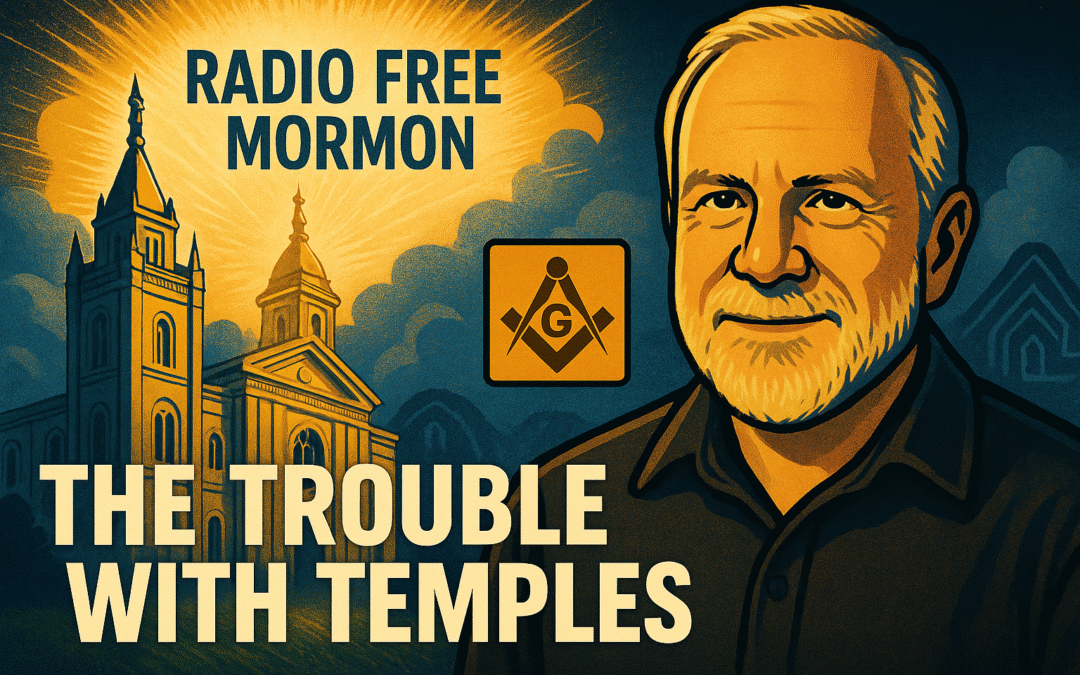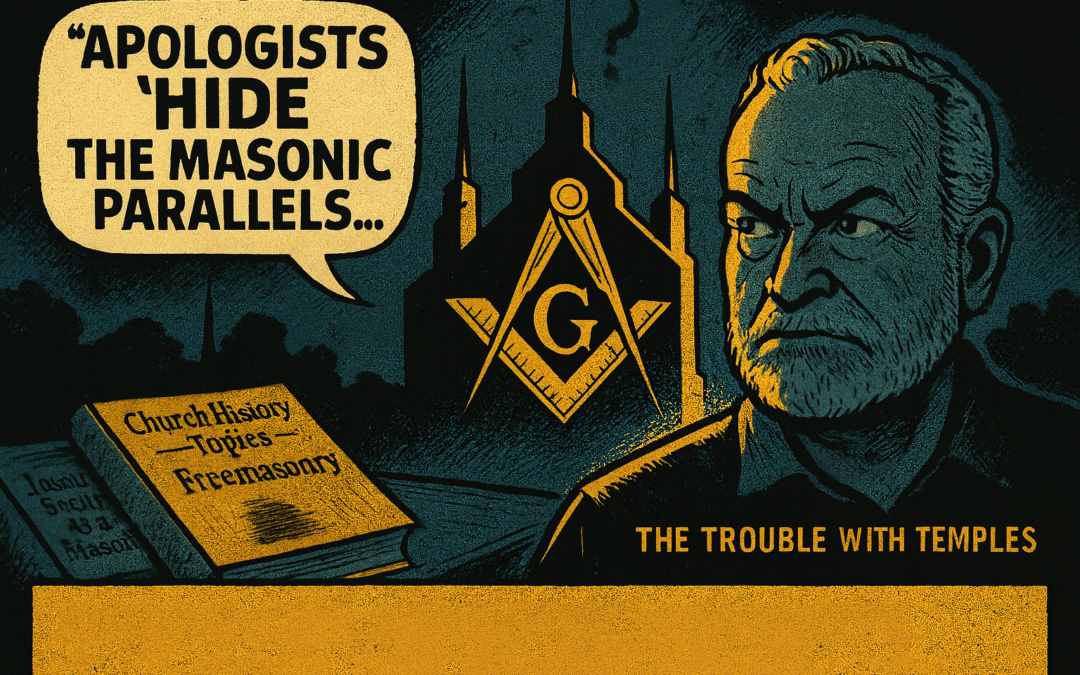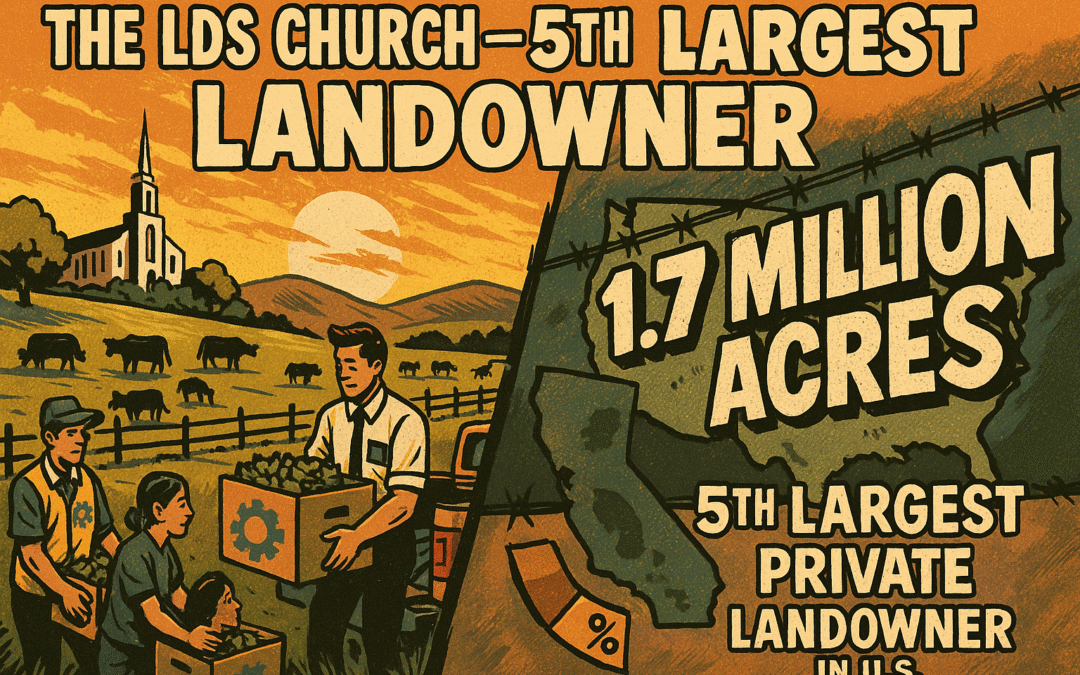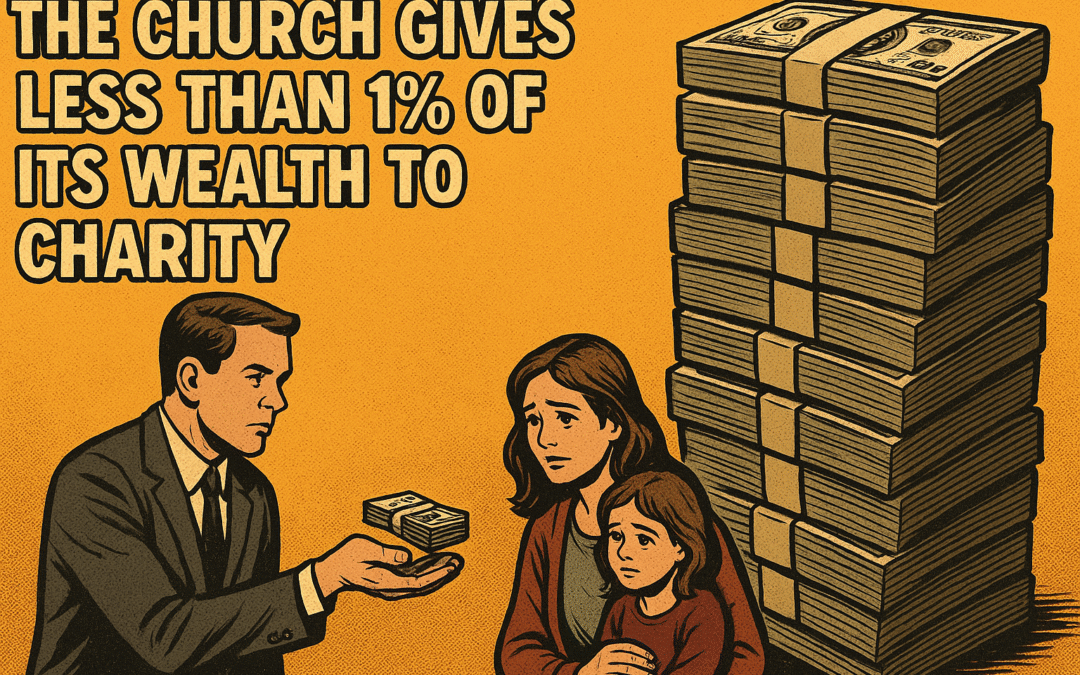
by Anonymous | Aug 27, 2025 | Mormon Temple
Bottom Line
Resemblance not ≠ copy-paste. The temple’s doctrinal frame and purpose remain distinct.
| Podcast |
Radio Free Mormon (RFM) |
| Episode |
The Trouble With Temples |
| Title |
“The exact same Five Points of Fellowship — including whisper ‘through the veil.’” |
| Category |
Temple / Masonry / Ritual Posture |
| Quote |
“We did exactly this… it was called the five points of fellowship… [and] through the veil… whispered in your ear…” |
| Core Claim |
Shared posture + whisper proves direct ritual transplant from Masonry into the temple. |
| Conclusion |
Partial Truth → Overreach |
| Logical Questions |
- Does posture similarity entail identity of meaning, purpose, and theology?
- What about documented ancient Christian circle/embrace prayer precedents?
|
🔍 Core Rebuttal
Historic overlaps in posture existed, but LDS sources frame the endowment’s covenantal, Christ-centered aims — not fraternal ethics. Latter-day Saint prayer circles and veil symbolism operate within a creation-fall-Atonement-ascent narrative foreign to Masonic goals. Responsible comparisons weigh both similarities and differences; “exactly” overstates and collapses categories.
Key Points
- Ritual forms can converge across traditions; theological cores may diverge sharply.
- LDS materials acknowledge contact with Masonry while rejecting simple imitation.
📚 Sources

by Anonymous | Aug 19, 2025 | Mormon Temple
Bottom Line
Parallels exist, but they don’t establish provenance. The Restoration’s temple arc is documented before and beyond Joseph’s brief Masonry window.
| Podcast |
Radio Free Mormon (RFM) |
| Episode |
The Trouble With Temples |
| Title |
“Temple penalties & signs are almost word-for-word the same as Masonry — in the same sequence.” |
| Category |
Temple / Masonry / Historical Claim |
| Quote |
“we have sometimes almost word for word the exact same description of those penalties and we have the sequence.” — RFM |
| Core Claim |
Verbal and ordered overlap allegedly proves the LDS endowment was copied from Masonic rites. |
| Conclusion |
Misleading |
| Logical Questions |
- Where is the full side-by-side, source-controlled text showing “word-for-word” identity?
- How do you control for 19th-century variation in Masonic monitors and for non-matches?
|
🔍 Core Finding
Church History Topics openly acknowledges limited similarities while stressing stark differences in content and intent: Masonry is a fraternal moral society; the endowment is a priesthood ordinance centered on Christ, covenants, salvation, and applies to women and men. Kirtland-era temple revelation and practice (D&C 109–110; washings & anointings) significantly predate Joseph’s March 1842 Masonic initiation, undercutting a pure “copying” thesis.
Key Points
- Purpose ≠ Purpose: Fraternal ethics vs. salvific covenants and Christ’s Atonement.
- Pre-1842 Trajectory: Temple theology and rites active years earlier.
- “Sequence” Rhetoric: Without a transparent probability model, “astronomical odds” is just a flourish.
📚 Sources

by Anonymous | Aug 10, 2025 | Church Finances
Bottom Line
The land exists — but not to hoard. It’s to serve. You can criticize religious real estate strategy, but there’s no scandal in feeding the poor and preparing for the future. The Church’s land isn’t secret. It’s sacred.
| Podcast |
YouTube – Mormon Stories |
| Episode |
“How the Mormon Church Secretly Built a $293 Billion Fortune” |
| Category |
Real Estate, Land Use & Framing |
| Quote |
“The Mormon Church owns an estimated 1.7 million acres of land across the United States — making it the fifth largest private landowner in the country.” — Narrator, 00:05:33 |
| Core Claim |
The LDS Church owns a massive amount of land and hides it from members and the public. |
| Conclusion |
True (Factually Accurate) / Framed to Mislead |
| Logical Questions |
- Is large land ownership by a church inherently suspicious?
- What is the land used for?
- How does this compare to other religious institutions?
|
🔍 Core Finding
Yes, the Church owns 1.7 million acres — and that land feeds the hungry, houses the saints, teaches the gospel, and preserves sacred ground. That’s not secrecy — it’s scale with a spiritual purpose.
📊 What the Land Is Used For
- Temples and meetinghouses
- Welfare farms and cattle operations (e.g. Deseret Ranches)
- Campgrounds, pioneer sites, and historical preservation
- Future expansion in growing population centers
📖 Global Context
- The Catholic Church owns tens of thousands of properties globally.
- The Church of England owns 200,000+ acres in the UK.
- LDS land holdings are big — but they’re not abnormal for a worldwide faith.
📚 Sources

by Anonymous | Aug 10, 2025 | Church Finances, Humanitarian
Bottom Line
The 1% claim is mathematically shallow and spiritually blind. The Church gives — consistently and globally. It just doesn’t liquidate sacred assets to impress online critics.
| Podcast |
YouTube – Mormon Stories |
| Episode |
“How the Mormon Church Secretly Built a $293 Billion Fortune” |
| Category |
Charitable Spending & Financial Ethics |
| Quote |
“Can you imagine paying 10% of your paycheck to an organization that you know has $300 billion?… Unfortunately though, less than 1% of that figure goes toward actual charities every year.” — Narrator, 00:07:04–00:07:34 |
| Core Claim |
The LDS Church gives an insignificant fraction of its enormous wealth to charity, revealing greed or hypocrisy. |
| Conclusion |
Partial Truth / Misleading Metric with Context Omitted |
| Logical Questions |
- What is the source of the “less than 1%” figure?
- What does the Church count as charitable giving?
- How is total asset value different from annual budget or spending?
|
🔍 Core Finding
The Church gave more than $1 billion to humanitarian causes in 2022. But the narrator compares that to a speculative $300 billion net worth — a number that includes temples, schools, farms, and global infrastructure. That’s not a valid comparison. No church “donates” its assets — they’re used to serve.
📊 Strategic Stewardship ≠ Greed
- The Church invests to support long-term growth, not short-term applause.
- Humanitarian work includes direct aid, disaster relief, education, and food production.
- Spending is based on needs — not PR ratios.
📖 What the Church Has Said
“We affirm our commitment to manage resources wisely… and to bless lives worldwide.”
— First Presidency, 2019
📚 Sources





